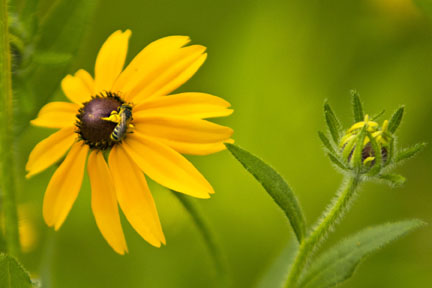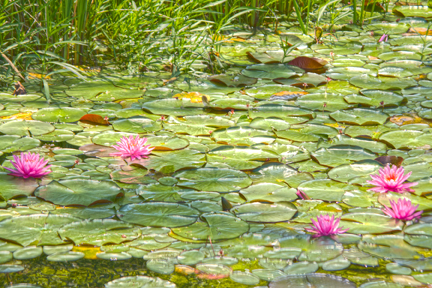Message for worship at West Richmond Friends Meeting, 3rd of Fifth Month, 2020
Speaker: Eugenia Mills
Scripture: Psalm 8
Photography – a Spiritual Experience
I am surprised that I am talking to you today about photography. Only after moving to FFC four years ago, did some folks refer to me as a photographer. This is not how I have seen myself, but rather as a nurse. My life’s career has been in nursing – care provider to the sick, and teacher to nursing students. This morning I want to share with you what it means to me to be an observer/participant in God’s beautiful creation and to record some of it in the form of photographs. The 8th Psalm is sometimes referred to as a nature Psalm; a Psalm of God, nature and humankind; a Psalm of a religious scientist. I have especially been drawn to parts of this Psalm as I enjoy being in nature and watching the wildlife, and the Psalm for me is a praise for God’s creation. When in nature, I immediately feel myself begin to relax and to observe and listen. Nature is not silent. The birds sing, the wind blows through the leaves and grasses, and water flows over rocks or drops off into a waterfall. All of these sounds are a normal part of nature. There are studies that support the good health benefits of spending time in nature. I know it is hard to find times for being out in the park when you are busy with a family or working full time. Yet the benefits may make it as important as taking a doctor’s prescription to improve your health. Give yourself permission to sit and observe and take in all that is going on around you. You do not always have to be in the outdoors, but can quietly sit where you are and observe creation around you. For those who are not able to hike or get outside easily, you can observe nature and wildlife through your house window or from your car. Be open to thoughts, sights and sounds around you.
Douglas Steere told a story about a woman who wanted to pray more deeply. The woman was advised to return to her room after breakfast and to knit for 15 minutes before God. She thought this odd advice, but she carried it out. She reported that soon her needles stopped knitting, and even though the tick of the clock was still heard, she felt the silence. She said, “I perceived that this silence was not simply an absence … of something but presence of something. The silence had a density, a richness, and it began to pervade me. The silence around began to come and meet the silence in me…. All of a sudden, I perceived that the silence was a presence. At the heart of the silence there was God who is all stillness, all peace, all poise.” I feel much this same way when out in the woods or watching wildlife from my kitchen window. The quiet noises and sights in nature fill me, and I perceive that in the wind, the bird song, the animal noises, the flowers, the trees there is a presence, and this presence is God.
I have found that I like to record this presence in creation through a hobby of mine – photography. Photography allows me to record a moment in time, and to be able to come back to that moment through the photograph. A photograph is also a means of sharing the experience with another. Combining photography with nature means you have to be very familiar with your camera and how to use it so operating the camera does not take away from the experience. It is important to remain open to all that is around you, and to focus on the presence of that moment. Douglas Steere spoke to being present where you are. This means being “all there,” being fully engaged in the moment at that place, with the spirit of that place. Sometimes when in the woods, I ask myself, am I being open to what is here? What is there here that I am not seeing, and should notice? Do I look for that of God in the creatures and plants and things or even people around me? Do I ever see God in ways I was not expecting? Do I come with heart and mind prepared for receiving and perhaps seeing in a new way?
In a recent article in the Indianapolis Star, the author, Scott Cox, said, “In the book and movie ‘The Color Purple,’ Shug Avery says that she believes that it ticks God off if we pass by a field of purple flowers and don’t take notice.” Cox went on to write that “Perhaps as much as anything, it pleases God when we pay attention to God’s amazing creation….
Just maybe, God can speak to us through all of the ordinary that is around us and within us. We might even discover that the ordinary is actually extraordinary.”
For me, taking photographic images is a form of meditation – of open receptivity. Howard Zehr, I think he is Mennonite, noted that “when we photograph, we do not actually reach out and take anything. A camera is basically a dark box with a receptor (film or digital sensor} on one side and a small opening on the other. Light reflected from the subject is projected through the opening by the lens onto the receptor opposite it.
When we do photography, we receive an image that is reflected from the subject. Instead of photography as taking, then we can envision it as receiving. Instead of a trophy that is hunted, an image is a gift.”
Thus, photography becomes a process of receiving rather than taking. It is a contemplative process, and requires a state of heightened awareness to what is around and a readiness to receive whatever presents.
Zehr has helped me to rethink how I go about my photography. I have had to change some of my photo language which actually makes me more comfortable, and fits with my Quaker beliefs. Photography language has been aggressive. For example, the small cameras that fit into a pocket or purse, and have a fixed lens (can’t remove the lens and attach another lens) are frequently referred to as “point and shoot” cameras. A photographer may ask another photographer – did you get the shot? Would you like to go with me to shoot Sandhill Cranes? I recently saw an advertisement from a company that sells camera equipment, and on the ad in big letters were the words “Aim the lens.” So much more is gained when the person behind the camera is open to what there is to receive rather than what there is to take.
What else has my photography helped me with? I purchased a digital camera in preparation for retirement. I hoped I could revive my earlier interest in photography as a way to fill the extra time I would need to fill when I no longer went to work. After purchasing a digital camera, I began taking photos out my window at home for the hour before I left for work. Most of the subjects were birds in the trees in my backyard. My family was astounded that I was photographing birds as I am very much afraid of birds. I did not want those feathers near me. I preferred a snake to a bird. I received from those photos an awareness of the many beautiful colors in those feathers, and how light on the feathers made the different colors, and that a creature I feared had become less frightening. I had gained a new appreciation for birds.



My photography has opened a door for communicating with and knowing others. Four years ago, when I moved to FFC winter was just beginning, and folks were not outside and, in their yards as they are in warm weather. I wondered how I would get to know other residents. I began taking photos around the property and shared them with one of the Vice-Presidents. She asked me to share my photographs with residents in the main building by placing photos on the bulletin board. It was hoped this would encourage the folks who did not get outside a lot to look out their windows and see God’s beautiful creation. This I have continued to do. To my surprise it opened ways to talk with folks, as they asked questions about subjects of the photos or commented in other ways. They responded to the photographs with enthusiasm and would ask when are you going to hang a new photo?
A couple of years ago, we had a late snow in April. I saw at my snow-covered bird feeder a collection of birds. There was a downy woodpecker, male and female Gold finch (the male in bright yellow mating plumage very unusual to see in snow) there was also a house finch, chickadee and a male cardinal.

This brought to mind a song I sang as a child, “Jesus loves the Little Children of the World.” I printed across the top of the photo the words from a verse of this song, “Red and Yellow, Black and White all are precious in His sight.” In hanging this photo on the bulletin board in the main house, I hoped it would inspire us to see our world with a more caring perspective.


Every spring since I have lived at FFC, a deer has birthed her fawn next to the main building and left the fawn until evening when she returns to nurse it and move it to another spot. I guess she thinks the elders at FFC are a safe group of folks to trust with her baby. One spring I had the privilege of spending a few weeks watching a pair of green herons raise their 4 babies.


I often say, “Thank You,” to a creature who has allowed me to take its photograph, or in this case a family portrait.

Who cannot be moved by God’s wonderful creation when you see a tiny hummingbird with its brilliant colors,

or a tall redwood tree,

spring flowers,

a summer flower garden

or the many colors of fall leaves?

How exciting to see a bird that has long been absent from this area of the country, return and build a nest and raise a family?


And it is exciting to see the common critters that share the area with us.





The poem by Christina Rossetti speaks to me:
Lord, purge our eyes to see
Within the seed a tree
Within the glowing egg a bird
Within the shroud a butterfly,
Till, taught by such we see…
Beyond all creature, Thee.
Jan Phillips, a photographer, says that she sees God everywhere, in every living thing. And to paraphrase her: for me when I look into the viewfinder on my camera, there is God looking back. Looking straight back at me.
New Revised Standard Version Bible, copyright © 1989 the Division of Christian Education of the National Council of the Churches of Christ in the United States of America. Used by permission. All rights reserved.
Poem © 2012 Christina Rossetti. All rights reserved.
This document and all photography are protected by U.S. and International copyright laws. Reproduction and distribution without permission from the author is prohibited. © 2020 Eugenia Mills. All rights reserved.









留言